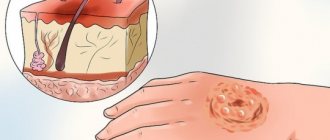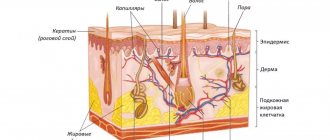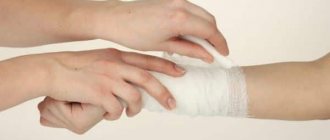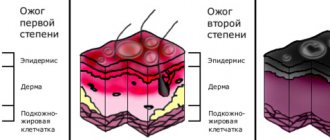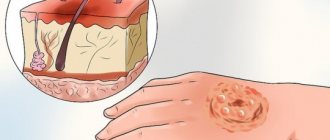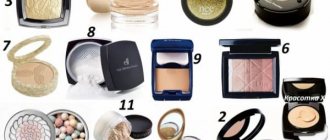Burn injury is one of the most common traumatic injuries in the world. Patients are often faced with a choice of which bandage to apply to the burn site. In this case, the method of treatment depends on the area of the lesion, the depth of the burn, and the general health of the victims. It is important to remember that superficial minor burns can be treated at home . If a more serious injury occurs, consult a doctor.
Branolind N with Peruvian balsam
Branolind N burn patch with Peruvian balsam has a wound healing and antiseptic effect.
Can not use:
- with individual intolerance;
- for the treatment of necrotic wounds.
Instructions for use:
- Open the package.
- Cut the headband to the desired size.
- Peel off a layer of paper from one side and apply it to the affected area of skin.
- Remove the paper from the other side of the bandage.
- Cover the bandage with a bandage or gauze and secure with a bandage.
- Change daily.
The price is about 100 rubles.
The patch is great for burns from boiling water.
Other varieties
Modern pharmaceutical companies produce burn patches with various medicinal impregnations.
The most effective remedies for superficial wounds include:
- Chitopran is a sterile biopolymer strip with an adhesive base that stimulates the restoration of burned skin. Used for 1-3A degree burns, frostbite, non-healing wounds, bedsores.
- Hemosorb is a non-woven bandage that quickly absorbs moisture. Used for bleeding burns, severe separation of serous fluid.
- Parapran - an atraumatic patch with paraffin impregnation is available with three drugs. It is used for superficial burns to relieve pain, destroy infection, and cleanse the affected area of dead tissue.
It is recommended to use dressing materials only as prescribed by a doctor in accordance with the instructions.
Plaster Cosmos Hydro Active
Advantages of using the Cosmos burn patch:
- hypoallergenic and breathable;
- made of durable textile fabric with a two-layer pad;
- serves as an antiseptic;
- protects the wound from water and dirt;
- adsorbs discharge from the wound;
- helps reduce pain;
- forms a gel medium, thanks to which the wound heals faster and the pressure on it is softened;
- you can not change it for several days;
- does not stick to the wound and leaves no marks;
- does not irritate the skin.
Contraindications: individual intolerance.
Instructions for use:
- With clean hands, open the package.
- Remove the protective film and apply the patch to the damaged area of skin.
Price is about 180 rubles per package (3 pieces, size 45 mm x 65 mm).
Indications for use of the patch
The patch contains a gel impregnated with medicinal substances with antimicrobial, analgesic, cooling and wound-healing effects. The patch itself is perforated, designed to prevent the accumulation of excess moisture, and has an absorbent pad.
And yet it creates increased humidity in the wound, which is permissible only in certain cases. For these reasons, the indications for use of the patch are as follows:
- Superficial burns of I-II degree, occupying a small area,
- The recovery period after deep burns in the stage of epithelization (covering with the epidermis, when the wound “heals”)
- Small areas of third degree burns after removal of blisters, necrosis in the absence of wound suppuration,
- Rehabilitation after dermatoplasty - skin grafting onto post-burn defects, when it is necessary to create better conditions for healing,
The indications are determined by the doctor, and without his knowledge, the anti-burn patch can only be used in the case of minor first-degree burns.
Hydrocoll
Used in the treatment of 1-2 degree burns; for 3 degree burns, Hydrocoll cannot be used .
The shape and size of the bandage should be selected according to the surface of the wound. The edges of the patch should overlap at least 1-2 cm of healthy skin on each side.
Advantages:
- self-fixing bandage with a semi-permeable top layer, which prevents the entry of water and microorganisms, facilitating body care;
- accelerates wound cleansing and healing;
- smooth edges of the bandage ensure reliable fixation;
- is painlessly removed.
Be sure to read:
Can Levomekol be used for burns: effectiveness and correct use of the ointment
At first (when exudate is released from the wound), the bandage should be changed daily, and then you can leave it for several days. The bandage needs to be changed if its color has faded and the swelling has spread to the wound surface.
A layer of hydrocolloid gel may remain on the wound; do not confuse it with pus. If desired, we can rinse the affected area of skin with Ringer's solution using a sterile syringe to assess the condition of the wound.
There are different sizes of bandages on sale. The price for 1 piece measuring 10 cm x 10 cm is about 300 rubles.
Disadvantages of use
Adhesive plasters for burns have disadvantages that must be taken into account when treating:
- Pollution. The dressing material quickly gets dirty, which increases the risk of microbes entering the lesions.
- Insufficient air access. Some patches have airtight protective layers. Because of this, the skin sweats a lot, and bacteria multiply faster under the bandage.
Sometimes tapes with a hydrogel base cause allergic reactions, as indicated by itching, small blisters around the wound, and redness.
Pharmadoct Healing and Aluminum
Advantages:
- has anti-inflammatory, bactericidal properties;
- due to the sorption pad with aluminum coating, the wound fluid is absorbed more intensively without sticking to the wound;
- accelerates healing;
- Suitable for treating blisters from minor burns.
We'll tell you how to use Levomekol ointment for burns. An excellent antibacterial ointment with a minimum of contraindications. Find out how to treat burn blisters at home.
The package contains 6 patches:
- Aluminum - 7x3.8 cm.
- Healing – 3 pcs. 7x3.8 cm each, 2 pcs. 7.5x7.5 cm each, 1 pc. 10x7.5 cm each.
Price up to 100 rubles.
Dressings for local treatment of burns
The high level of modern medicine and innovative medical technologies makes it possible to save the lives of people with burns of more than 50% of the entire surface of the body, including those with deep thermal injuries. And local treatment after burns , the success of which largely depends on the properties of the dressings used. Classification of burns The provision of medical care for burns should be differentiated, depending on the depth and degree of the burn. All types of burns are classified as follows: I degree - a mild burn of the upper layer of the epidermis, which is manifested by swelling of the affected area of the skin and its redness. First-degree burns are treated at home; hospital treatment is required only if more than 50% of the skin is damaged. II degree - the entire epidermis is affected, the burn is manifested by detachment of the epidermis and the formation of blisters (for example, a burn with boiling water). If a significant part of the body surface is affected by burns, burn disease may develop; this condition requires mandatory hospital treatment. IIIa degree are skin burns in which not only the epidermis is affected, but also the dermal layer of the skin, or the skin itself, but viable cells remain in the affected areas, from which epithelization of the wound is possible in the future. IIIb degree - characterized by complete damage to the dermal layer of the skin; subcutaneous tissue may also be affected. Treatment of this type of burns is only inpatient; with a large area of burns, burn shock develops. IV degree - deep severe burns, in which, in addition to the skin, subcutaneous structures are affected - subcutaneous tissue, muscles, bones. First aid for burns First aid for extensive and/or deep burns is to take the victim to a hospital as soon as possible to provide qualified medical care. Before transporting the victim, first aid for burns will consist of cooling the burn site and pain relief. For cooling, you can use cold running water, snow or ice. For pain relief, the victim can take two analgin tablets orally.
Treatment after mild burns at home Treatment after I-II degree burns with a small area of the affected areas is possible at home. First aid for burns in this case will consist of treating the wound, after which a special burn bandage is applied. The wound is carefully, so as not to injure, cleaned of dirt and debris of the epidermis, and then treated with antiseptic solutions - for example, an aqueous solution of chlorhexidine bigluconate. Opened blisters should be removed, and liquid should be removed from large unopened blisters by puncture; the upper epidermis should not be cut off. Small bubbles do not need to be opened. Next, you should use an ointment for burns with antibiotics - this will avoid suppuration and soften the edges of the wound. After this, a burn bandage is applied to the wound, which will protect the wound surface from external influences and secondary infection.
Optimal dressings for burns
Until recently, every dressing for a patient with burns turned into a very painful and extremely unpleasant procedure, since ordinary gauze sterile bandages and napkins stuck to the wound surface and injured the wound every time the dressing was removed. In addition, such bandages have insufficient sorption capacity, as a result of which wounds remain wet for a long time and very slowly move from the exudation phase to the granulation phase. But now you can make dressings painless and speed up wound healing using new comfortable dressings from PAUL HARTMANN. At home, it would be optimal to use the following dressings for burns: Atrauman Ag, Branolind N, Grassolind neutral. They not only close the wound, but also act as a burn remedy that promotes faster wound healing. The burn dressing from PAUL HARTMANN does not stick to the wound surface, is easy to remove and easy to apply. The use of Atrauman Ag, Branolind N, Grassolind neutral dressings is quite sufficient for wound healing.
Treatment for third degree burns As for third degree burns, treatment should be adjusted depending on the phase of the wound process. As a rule, such treatment is carried out in a hospital setting. They also use special dressings for burns PAUL HARTMANN: TenderWet 24 (non-adhesive, reliably closes the wound, softens its edges, easy to remove), HydroTac (stimulates regeneration, has good absorbency), Syspur-derm (burn dressing that prepares the wound to skin grafting), Hydrotul (bandage used after plastic surgery).
Silkoplast
Effective as first aid and for the treatment of second degree household burns.
Advantages of the patch:
- creates a cooling effect, thereby reducing pain;
- absorbs exudate from the wound;
- accelerates healing.
Before applying the patch, the wound and the skin around it should be cleaned. The edges of the patch should be well fixed, folds should not be allowed.
Price for 6 pieces is about 300 rubles. The package contains 3 pieces measuring 4.5 x 6.5 cm and 3 pieces measuring 6.8 x 4.3 cm.
Voskopran
For 2-3 degree burns, you can use a Voskopran bandage with Levomekol ointment or methyluracil 10%.
Cannot be used in case of individual intolerance, a history of adrenal insufficiency, as well as during pregnancy and breastfeeding .
Be sure to read:
Burns from boiling water: degrees, first aid and treatment at home
Benefits of the bandage:
- protects against mechanical influences, dirt, chemical irritation;
- prevents the development of secondary infection;
- prevents drying out and loss of bodily fluids;
- maintains the required temperature;
- accelerates the wound healing process.
In the absence of inflammatory foci, the bandage can be left until complete healing.
The price for 5 pieces measuring 5x7.5 cm is about 350 rubles. There are larger bandages (10x10 cm).
Rules of application
First you need to decide which remedy is best for a burn in a particular case. If an anti-burn dressing is indicated, then the rules for its use are very simple, they are as follows:
- A fresh burn should be rinsed generously with running water at room temperature or cool for 15 minutes, then carefully dry the skin by blotting with a dry soft cloth,
- Remove the protective film from the patch , carefully, holding the edges and not touching the sterile surface, then apply it to the burn wound so that the adhesive area is on intact skin,
- After this, press lightly and hold for a few seconds.
The patch is worn for 5-7 days; as a rule, the superficial burn heals completely during this time. If the surface of the patch gets very wet and redness of the skin appears around the wound, it should be removed, rinse the burn surface with an antiseptic solution, apply a dry sterile bandage and consult a doctor.
Vitavallis
The dressing is suitable for the treatment of chemical and thermal burns of all stages (1-3). Contraindicated in case of individual intolerance.
Advantages:
- reduces pain;
- minimizes scar formation;
- accelerates healing;
- protects the wound from infection and cleans it;
- does not stick to the wound and is easily removed.
Attention! Vitavallis cannot be used in conjunction with ointments.
The bandage should be changed once a day. If there is no wound exudate, it can be left for up to 5 days.
Price for 1 piece 10 x 10 cm is about 140 rubles.
Arma-gel
Hydrogel anti-burn dressing Arma-gel is indicated for thermal, electrical, and chemical burns of 1st, 2nd, 3rd degree.
Advantages:
- cools the burn site, reduces the likelihood of blisters;
- protects the wound from infection;
- absorbs wound exudate;
- softens necrotic formations, making them easier to remove from the wound;
- does not stick to the wound, can be removed painlessly.
Do not leave the bandage on for longer than 2 days.
GelePran
Another sterile hydrogel coating. There are several types:
- with miramistin (antiseptic and healing effect);
- with lidocaine (local anesthesia);
- with silver (prolonged antibacterial effect).
Attention! GelePran is suitable only for the treatment of dry wounds, without wound discharge.
The covering should be securely fixed with a plaster or bandage. The frequency of dressings depends on the condition of the burn.
Sold in packs of 2 pieces 5x7.5cm (about 360 rubles) and 5 pieces 7.5x10cm (about 900 rubles).
Properties, types and features of the use of burn plasters
Burns
A plaster for burn wounds is a rectangular shaped plate with different sizes depending on the manufacturer. It is placed in a sterile and carefully closed package, this guarantees the integrity of the product.
Composition and features of patches
The materials for making the patch are high-quality components impregnated with an anti-burn preparation.
Interaction with the damaged area provokes the adsorption of secretions, which turn into a gel-like substance.
The effect of the product promotes wound healing by creating an environment where skin cells grow and layering occurs.
They have the following advantages:
- relieve uncomfortable sensations;
- prevent infection;
- have a cooling effect;
- accelerate regeneration;
- no allergic reactions;
- There are no problems with removing the patch.
Types and modifications
There are:
- nanoplaster is a development of Russian scientists. Heals large area burns;
- Branolind;
- gel Gelepran. The hydrogel preparation consists of 70% water;
- Space.
The burn patch with hydrogel has the following modifications:
- with Miramistin – antibacterial component;
- with lidocaine, promotes pain relief;
- with silver content, has a prolonged antibacterial effect.
A silicone patch that eliminates damage, including scars caused by skin contact with boiling water, is fixed with a bandage.
Before sticking it on the burn, you need to use ointment. 1st degree burns can be done without it, but for injuries 2 and 3, you can’t do without Levomekol.
Rules of application
The patch used for burns is applied according to the following scheme. Before opening the package, wash your hands thoroughly. If the product is used for recent burns with boiling water, cool the affected area with running water.
Dry the wound using sterile gauze or bandage. The surface has a fabric base covered with a layer of paper. Measure the required length, cut it, remove the existing protective film, and seal the damaged area of the dermis.
When can you cover a burn with a band-aid?
Treatment of injuries at home is possible if you are only slightly burned. In case of severe damage or complications, consult a doctor.
If a child is burned, consult a doctor before use.
It is not recommended to apply it to the face.
If there is no improvement when using the patch, consult a specialist.
Apollo
Suitable for first aid and treatment of 2-3 degree burns.
Be sure to read:
What to do in case of a chemical burn of the skin: treatment at home
Ingredients:
- polymer hydrogel;
- iodovidone;
- anilocaine;
- textile base.
Advantages:
- prolonged cooling effect;
- pain relief (up to one and a half hours);
- antimicrobial effect;
- protection against wound infection;
- gentle removal of burn eschar;
- prevention of post-burn blisters.
Dimensions: 10 cm x 10 cm (about 220 rubles), 20 cm x 30 cm (about 350 rubles).
How to use burn plasters correctly
There are general recommendations for the use of plasters for burns:
- After receiving a burn, it is necessary to cool and rinse the wound - place the affected area under a stream of cold water.
- Next, the burn should be carefully treated with an antiseptic, such as hydrogen peroxide. Do not use iodine, brilliant green and other alcohol-based antiseptics.
- Dry the wound with a sterile, lint-free material (you can use a regular bandage folded in several layers).
- Remove the protective paper or film from the patch.
- Apply to the burn and secure tightly.
Contraindications for use
Products for protecting burned skin are not recommended for use when:
- purulent complications;
- extensive burns;
- pregnancy and lactation;
- proneness to allergies;
- bacterial inflammation;
- dermatological diseases.
In isolated cases, the patches provoke weeping rashes, itching, and redness. If such symptoms appear, dressing material should not be used. Tapes with gel pads are applied to children only on the recommendation of a pediatrician. Also, do not apply a bandage to injured skin at the granulation stage when the wound is healing.
